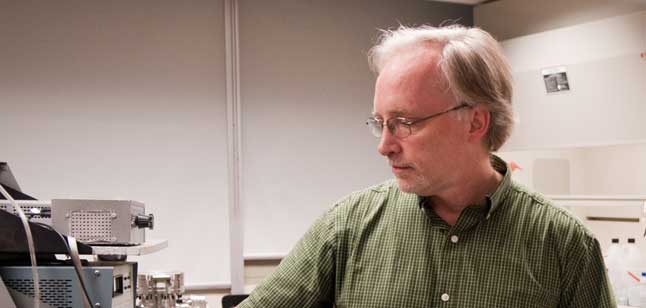James Doyle’s Research

Jim Doyle’s main areas of research straddles the boundary between chemistry and physics with an emphasis on chemical and physical processes that occur in plasma-assisted deposition of materials. His research is both experimental and computational. Much of his work has focused on materials used in thin film photovoltaics (solar cells). Research areas include physio-chemical kinetics of silane, germane, methane, acetylene, and hydrogen glow discharge plasmas using mass spectrometry; deposition of zinc oxide and germanium thin films by magnetron sputtering; plasma characterization by electrostatic probes; and computer modeling of plasmas and transport. He has also worked on hot-wire deposition of silicon and silicon-germanium alloys and solution and electrodeposition of photo-electronic materials. Recent and on-going work includes the modeling of grid energy balance with renewables, sputter atom transport simulations, stochastic effects in neuron action potentials, deposition and characterization of thin films for water electrolysis hydrogen production, and modelling the life cycle of garlic mustard.
Recent Publications (*denotes Macalester student co-author).
Hannah Johlas*, Shelby Witherby*, and James R. Doyle Storage requirements for high grid penetration of wind and solar power for the MISO region of North America: A case study Renewable Energy vol. 146, 1315 (2020).
Abigail Cotter*, Alexander Stowell*, John Carlson*, and James R. Doyle A mass spectrometric method for estimating dissociation rates in hydrogen discharge plasma, Journal of Vacuum Science and Technology A vol. 36, 031304 (2018).
See Curriculum Vitae for more details and publications.